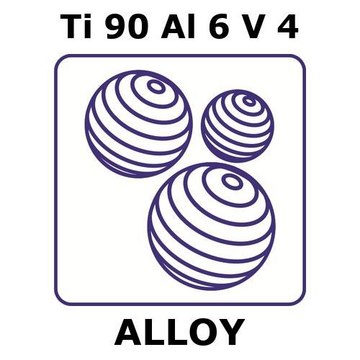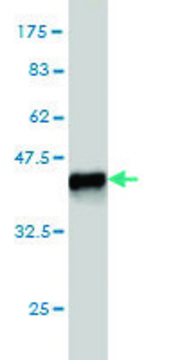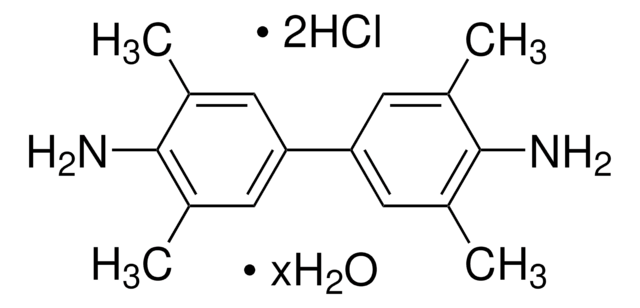D5637
3,3′-Diaminobenzidine tetrahydrochloride hydrate
≥96%
Synonym(s):
(1,1′-Biphenyl)-3,3′,4,4′-tetramine tetrahydrochloride dihydrate
About This Item
Recommended Products
Quality Level
Assay
≥96%
form
powder, crystals or chunks
technique(s)
titration: 96-104% (with NaOH)
color
white to light brown, and Faint Red and Faint Grey to Light Grey
mp
280 °C
solubility
H2O: 50 mg/mL
application(s)
diagnostic assay manufacturing
hematology
histology
storage temp.
−20°C
SMILES string
O.Cl.Cl.Cl.Cl.Nc1ccc(cc1N)-c2ccc(N)c(N)c2
Looking for similar products? Visit Product Comparison Guide
Related Categories
1 of 4
This Item | D9015 | 32750 | T8768 |
|---|---|---|---|
| technique(s) titration: 96-104% (with NaOH) | technique(s) - | technique(s) UV/Vis spectroscopy: suitable | technique(s) - |
| color white to light brown, and Faint Red and Faint Grey to Light Grey | color off-white to faint red, to beige | color - | color - |
| application(s) diagnostic assay manufacturing | application(s) diagnostic assay manufacturing | application(s) - | application(s) - |
| solubility H2O: 50 mg/mL | solubility water: 50 mg/mL, clear to slightly hazy | solubility - | solubility acetic acid: water (1:2): 20 mg/mL, clear to slightly hazy |
| form powder, crystals or chunks | form powder | form - | form powder |
| assay ≥96% | assay ≥96% (TLC) | assay ≥97.5% | assay ≥98% |
General description
Application
Biochem/physiol Actions
Signal Word
Danger
Hazard Statements
Precautionary Statements
Hazard Classifications
Acute Tox. 4 Oral - Carc. 1B - Eye Irrit. 2 - Muta. 2
Storage Class Code
6.1C - Combustible acute toxic Cat.3 / toxic compounds or compounds which causing chronic effects
WGK
WGK 3
Flash Point(F)
Not applicable
Flash Point(C)
Not applicable
Personal Protective Equipment
Choose from one of the most recent versions:
Already Own This Product?
Find documentation for the products that you have recently purchased in the Document Library.
Our team of scientists has experience in all areas of research including Life Science, Material Science, Chemical Synthesis, Chromatography, Analytical and many others.
Contact Technical Service








